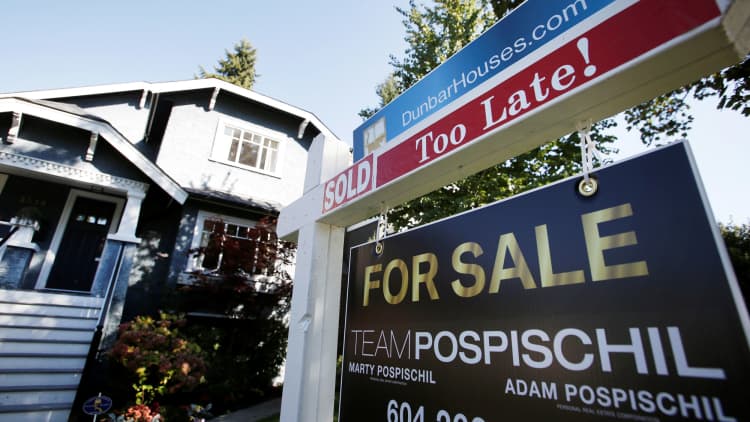
A sharp jump in homebuilder confidence last month was short-lived.
A monthly sentiment index retreated 2 points in January, and December's seven-point jump was revised down by one. The National Association of Home Builders/Wells Fargo Housing Market Index (HMI) now stands at 67. Fifty is the line between positive and negative sentiment. The index was at 61 in January of 2016.
Despite the January drop, some builders say there are still reasons to be bullish. "Builders begin the year optimistic that a new Congress and administration will help create a better climate for small businesses, particularly as it relates to streamlining and reforming the regulatory process," said NAHB Chairman Granger MacDonald, a homebuilder and developer from Kerrville, Texas.
All three of the index's components pulled back. Current sales conditions fell three points to 72, sales expectations in the next six months fell two points to 76, and buyer traffic fell one point to 51.
The new year brings new challenges for the homebuilding industry, specifically higher mortgage rates. Builders' costs have soared in recent years due to rising costs for land and labor but more for increased regulation and the price of compliance. Builders are hoping the new administration of Donald Trump will ease those regulations. That is what caused builder confidence to spike immediately post-election. Now the reality of higher costs for buyers and potentially slow-moving regulatory reform is setting in.
"NAHB expects solid 10 percent growth in single-family construction in 2017, adding to the gains of 2016," said NAHB Chief Economist Robert Dietz. "Concerns going into the year include rising mortgage interest rates as well as a lack of lots and access to labor."
Regionally, on a three-month moving average, sentiment in the Northeast rose two points to 52 and rose three point in the Midwest to 64. The South and West each held steady at 67 and 79, respectively.


